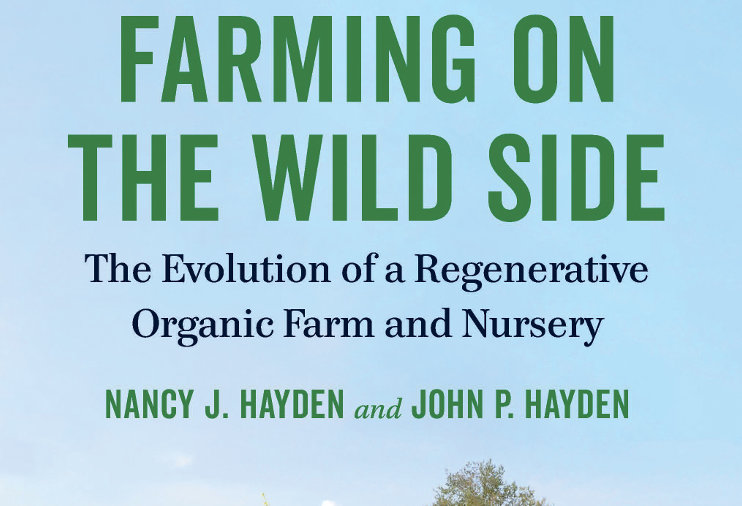 Published by Chelsea Green, 2019 by Nancy and John Hayden
Published by Chelsea Green, 2019 by Nancy and John Hayden
I was asked to review this book because I have reviewed similar ones for Resilience; see here and here. So what’s different about this one? I’d say mostly the personal tone, as the authors tell the story of their lives on the farm, how and why they changed over the years.
The Haydens met in college (both were studying biology and ecology), then went to separate Peace Corps stints in Africa; when they returned they married, went to graduate school in Michigan, and then bought an eighteen acre farm in northern Vermont. Nancy had gotten a job at the university, which was the reliable income as they went through many changes on the farm…including raising four kids, two sons and two foster daughters.
The first paragraph of the preface sums up this book nicely:
“Farming on the Wild Side is the story of how and why we turned a former conventional dairy farm into a biodiversity-based regenerative organic farm. It is the story about our practices and building a relationship with the land and all its inhabitants. It describes the work that heals and restores us, the work of farming as cocreators with nature.”
Most of the book tells the tale of their evolution from a primarily livestock operation, to doing a vegetable CSA, to a focus on perennial fruits, especially unusual fruits. Meanwhile, they were also planting orchards, adding high tunnels, and letting a verge grow up in wild plants to keep the pollinators and other wildlife happy. Some of the changes came because they were looking for ways to best steward their land and support a healthy ecosystem, but they were also influenced by the need to respect physical limits as they got older and their kids grew up and left, as well as by the continuing struggle to make a living with the farm. This led to a turn away from a vegetable CSA when a lot of new competitors entered the area, at a time when a turn toward perennial fruit growing made sense anyway. New local wineries and other beverage makers provided a market for fruits and berries…but climate change was a factor too, with increased flooding making perennial shrubs and trees a better bet than annual vegetables.
The book has quite a few photos, well captioned, and many drawings, mostly of plants and insects (some of the drawings are not labeled, but they usually illustrate something in the adjacent text). I liked this, and it enhanced the part of the book I liked the best, which is that the Haydens’ love of their land and of the ecological web of which it is a part, shines through everywhere. There are many descriptions of a walk around the pollinator pathway, and the bugs and flowers encountered in different seasons, or watching snow fall from the porch. There are details about different varieties of apples, and a long list of berries. The Haydens do keep honeybees, but devote more attention to supporting native pollinators.
As I said in the multi-book review, which book is best for you depends a lot on your situation and goals, and especially on where you live. This one is set in Vermont, on a small farm, and thus might be particularly applicable to people living in cold temperate climates, and looking at that level of farming. But much of the book is philosophical and applicable almost anywhere, as when they question the war against invasive species, or detail the value of leaving some areas wild, even if the neighbors think it’s unkempt. This allows the native ecology to flourish and work harmoniously, controlling pests, pollinating crops, and preventing erosion. Thus, I recommend this book to anyone looking for ideas on how best to steward their land in the most responsible ways.





